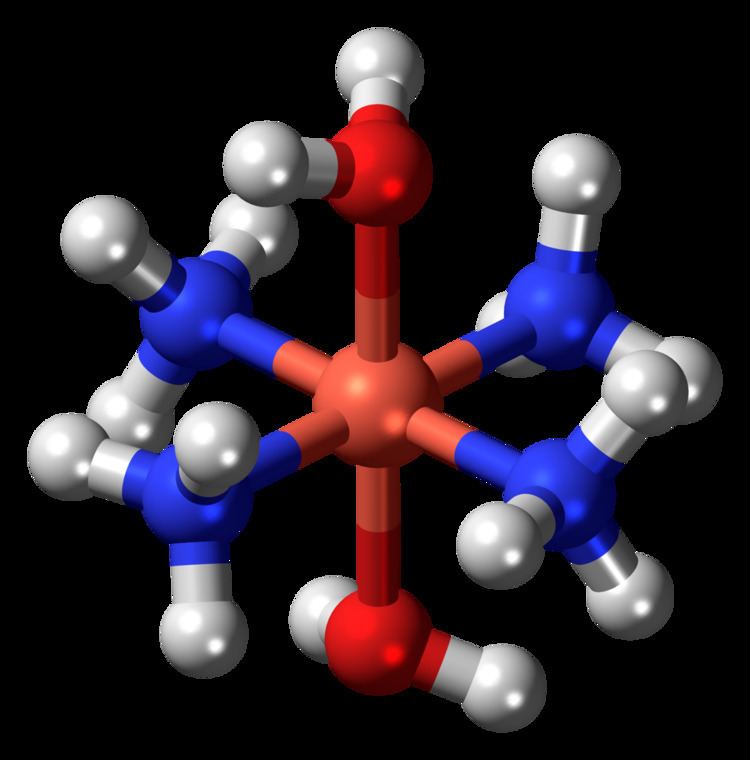 | ||
Schweizer's reagent is the chemical complex tetraamminediaquacopper dihydroxide, [Cu(NH3)4(H2O)2](OH)2. It is prepared by precipitating copper(II) hydroxide from an aqueous solution of copper sulphate using sodium hydroxide or ammonia, then dissolving the precipitate in a solution of ammonia.
When the entire amount of copper is precipitated as hydroxide, it is advisable to filter it and dispose of the filtrate and rinse the precipitate from sulfate and other excess ions.
It forms a deep azure solution. If the solution is evaporated, it leaves light blue precipitate of copper hydroxide. This is because the formation of the tetraminocupric complex is reversible and ammonia evaporates together with the water. If the evaporation is conducted under stream of ammonia, then deep blue needle-like crystals are formed. These crystals should be kept in isolation or in ammonia atmosphere. Besides, when the concentration of ammonia solutions is very high, divalent copper ions in presence of dioxygen, catalyze ammonia oxidation, giving rise to copper ammine nitrites: Cu(NO2)2(NH3)n;
Schweizer's reagent finds use in production of cellulose products such as rayon and cellophane, because wood pulp, cotton fiber, and other natural cellulose sources are soluble in the solution. Dissolved cellulose precipitates when the solution is acidified. These properties of Schweizer's reagent were discovered by the Swiss chemist Matthias Eduard Schweizer (1818–1860), after whom the reagent is named.
